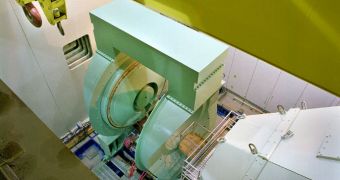Using the Relativistic Heavy Ion Collider (RHIC) machine at the US Department of Energy's (DOE) Brookhaven National Laboratory (BNL), a team of researchers managed to create an extreme state of matter. Their test results produced a form of matter that was about four trillions of degrees Celsius, a temperature about 250,000 times hotter than the one inside the very core of the Sun. This is also the highest temperature ever achieved in a scientific laboratory, the experts say. Three of the team members are based at the Vanderbilt University, PhysOrg reports.
When it comes to nuclear physics research, the RHIC is the largest particle accelerator in the world. The physics group managed to obtain their groundbreaking results by accelerating gold nuclei to about the speed of light, in opposite directions, and then colliding them head-on. The super-heated state of matter is believed by many to be the elusive quark-gluon plasma (QGP), the thing that existed in the primordial Universe, just fractions of fractions of seconds after the Big Bang. The results were detected by the massive PHENIX detector, one of the four such instruments located on the RHIC's 2.4-mile circumference. Designing and developing the machine took nine years.
During the design and construction phases of the PHENIX project, Vanderbilt physicists Victoria Greene, who is the executive dean of the College of Arts and Science, Charles Maguire, a professor of physics, and Julia Velkovska, an associate professor of physics, played an instrumental role. The group was proud to announce the creation of QGP on February 15 in New York, at the annual meeting of the American Physical Society. “The temperature measurement was made at PHENIX by measuring the photons, the light particles, that were created with the plasma and escaped without interacting with other particles,” Greene explains.
The expert was also a part of the team that produced the paper reporting on the results. She explains that this type of scientific investigations revolves around understanding the most primordial of all “primordial soups,” the mix that eventually led to everything around us springing into existence. Investigating QGP could result in a deeper and more complete understanding of the “strong force,” one of the four elementary forces in the Universe, alongside the weak force, electromagnetism and gravity. This particular force is responsible for keeping the nucleus of atoms in their place, and their components tightly-bound together.

 14 DAY TRIAL //
14 DAY TRIAL //